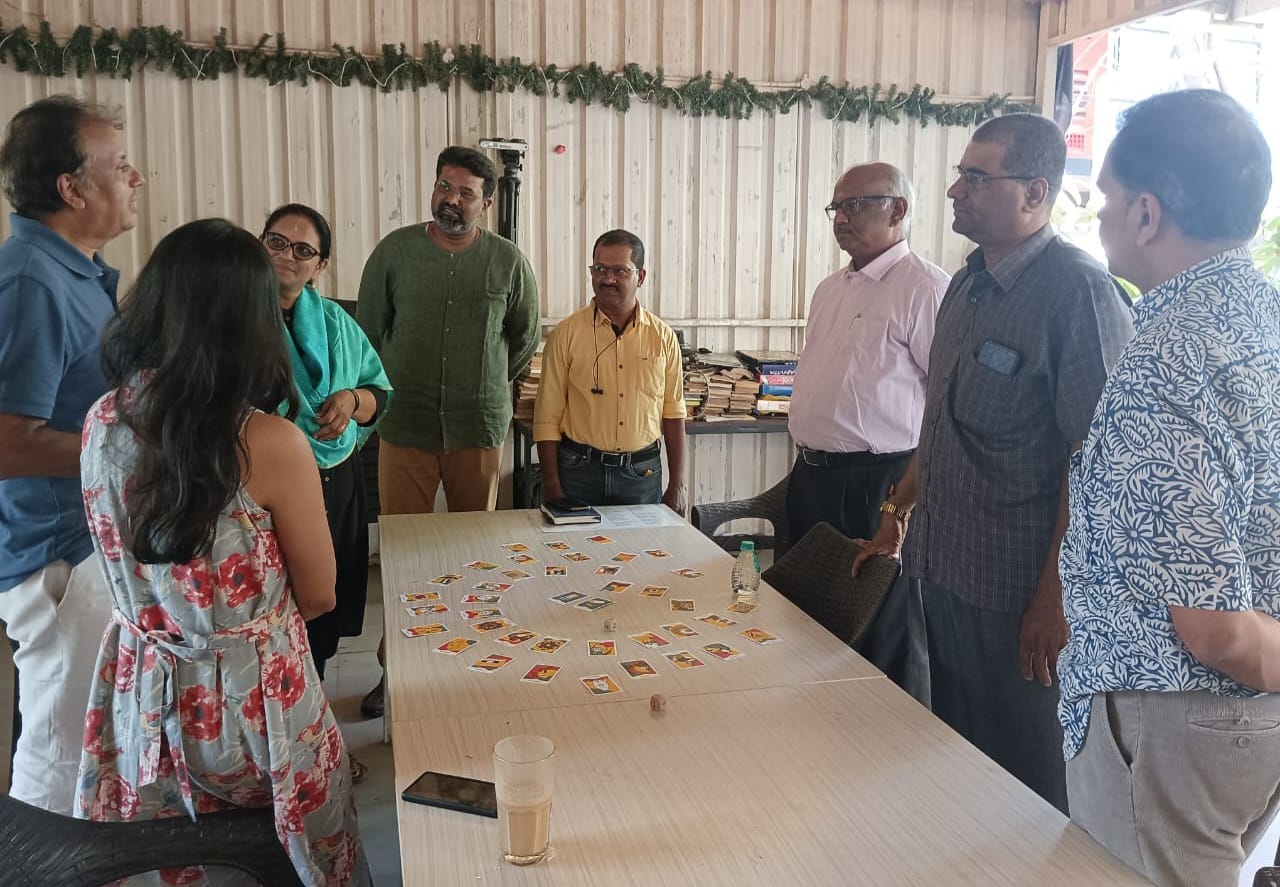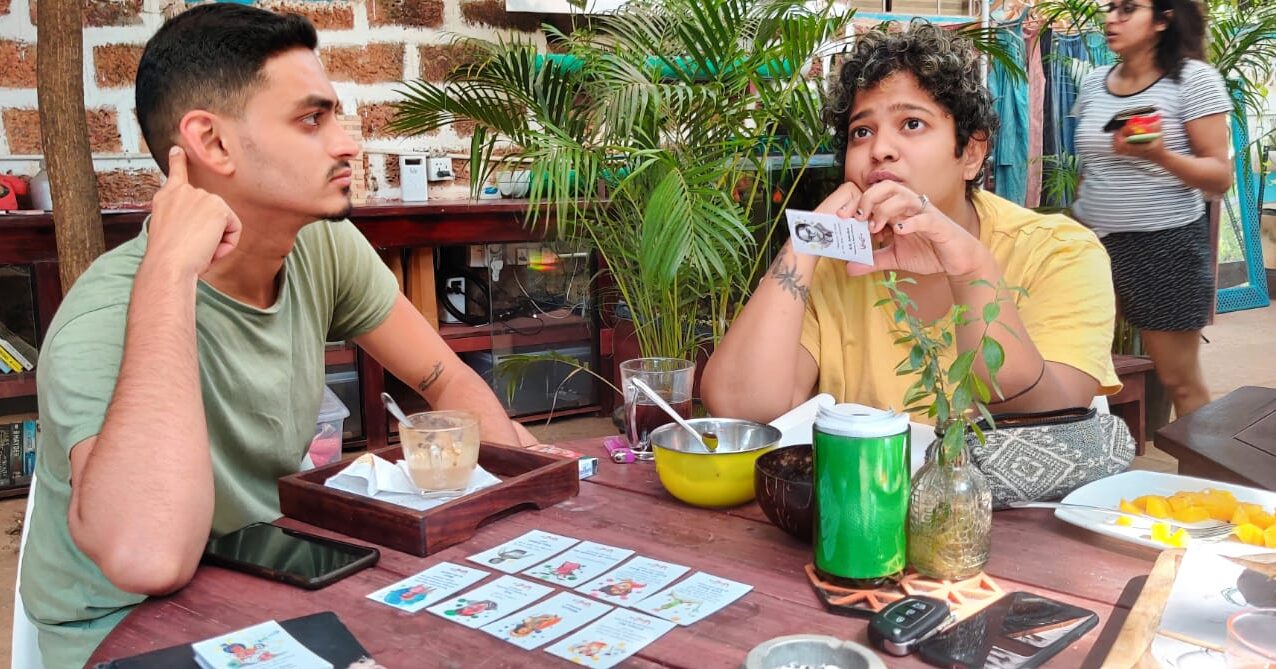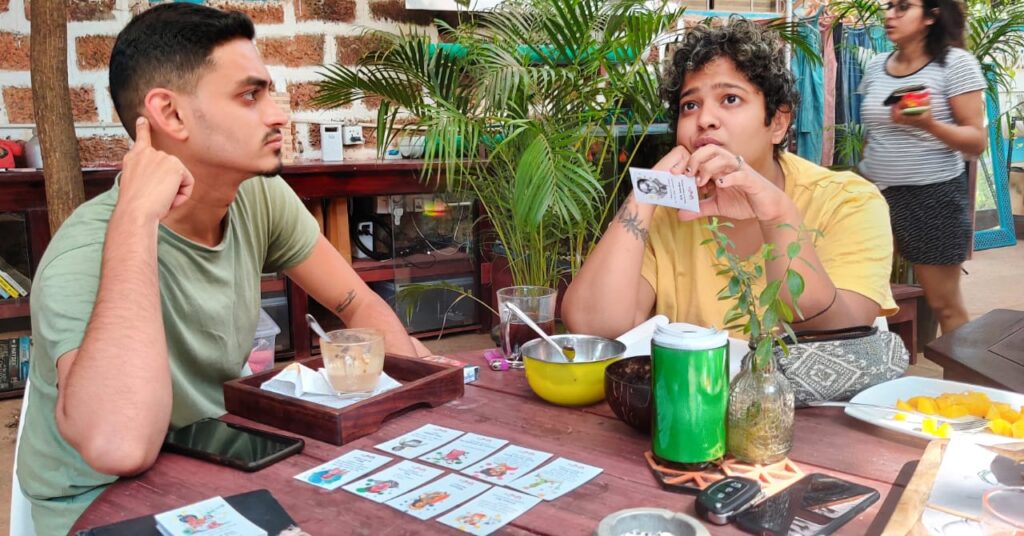
Menu

Are you a budding game designer wanting to design your very own card game? or are you a card and board game enthusiast curious to know the nitty gritty of card game design. Whether you’re creating a game for your own enjoyment or for a client, following a structured approach can make all the difference in bringing your vision to life. We have designed 4 conversation card games popular in India, and as someone deeply immersed in this world, I’d love to share with you the journey we’ve taken, filled with insights, challenges, and triumphs. Here are five crucial steps to guide you through the process:

STEP 1: Know Your Intention, desired outcome and Audience:
Picture this: It was a rainy afternoon, and we were huddled around a table, brainstorming our next game. We asked ourselves, “What do we want players to feel? Who are we designing this for?” Every great game begins with a clear understanding of its purpose and audience. Whether it’s a game designed for a specific demographic or one aimed at sparking meaningful conversations, take the time to grasp the intentions and desired outcomes. If it’s an in-house project, define your goals clearly to align your efforts.
STEP 2: Conduct Thorough Research
Dive deep into your chosen subject matter or theme. Gather information, assess different perspectives, and compile relevant content. Understanding the intricacies of your chosen topic will not only enrich your game’s content but also ensure that it resonates with your target audience.
STEP 3: Prototype Stage
With a solid understanding of your game’s purpose and content, it’s time to move to the prototype stage. Experiment with different components, mechanics, and formats based on your findings from the research phase. This stage allows you to explore various possibilities and refine your ideas before committing to a final design.
STEP 4: Playtests and Iteration
Picture a room filled with laughter and animated discussions—that was our playtesting sessions in a nutshell. You would want yours to be the same. Once you have a prototype in hand, it’s crucial to put it to the test. Gather a diverse group of playtesters and observe how they interact with your game. Pay close attention to their feedback and be prepared to iterate based on their insights. This iterative process is essential for refining your game mechanics and ensuring an engaging experience for players.

STEP 5: Finalize Interface, Printing, and Publishing
With playtesting complete and your game refined, it’s time to finalize the interface design and prepare for printing and publishing. Pay attention to every detail, from the layout of the cards to the quality of the materials used. Whether you’re printing a physical copy or preparing for digital distribution, ensure that your game is polished and ready for the world to enjoy.
With these 5 steps, you can create an amazing card game that can be the next UNO or Exploding Kittens.
Sign up to receive our latest Updates
